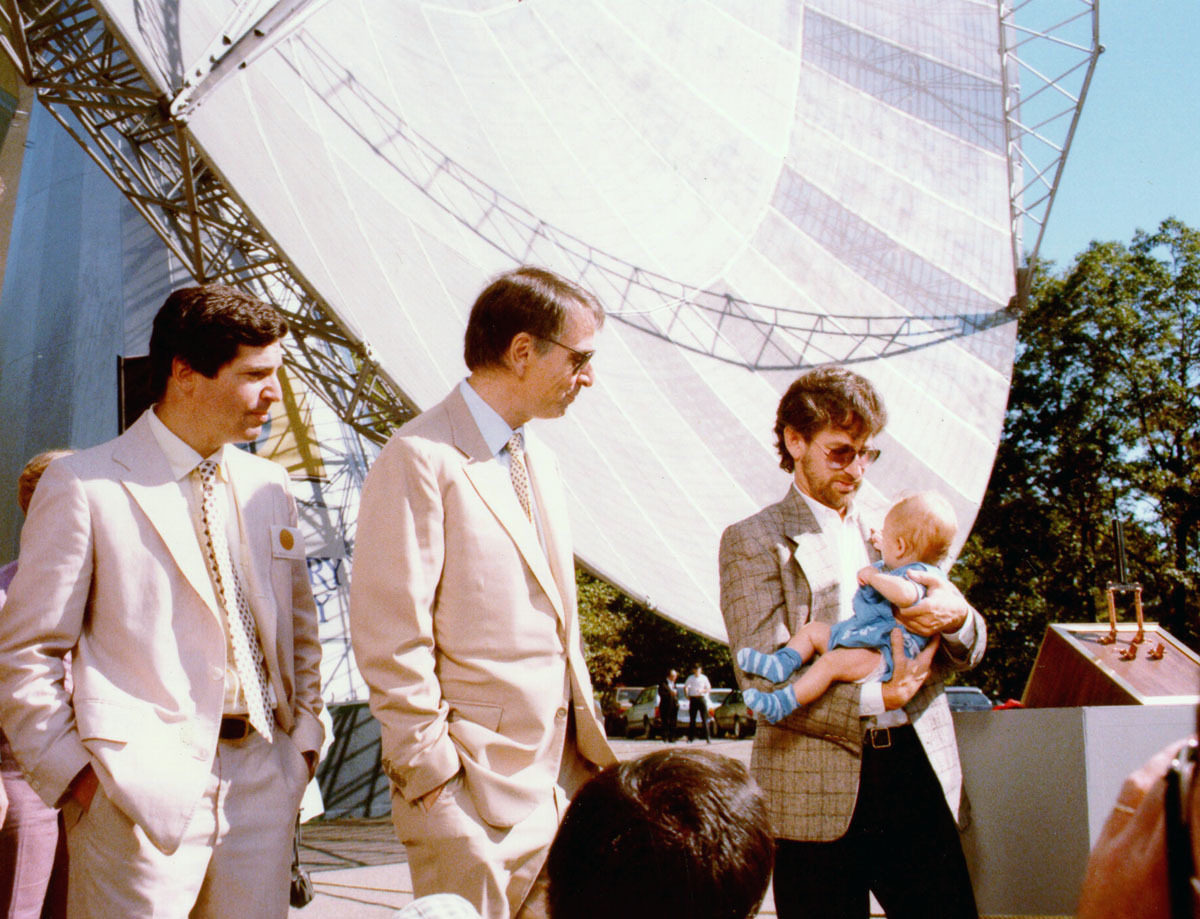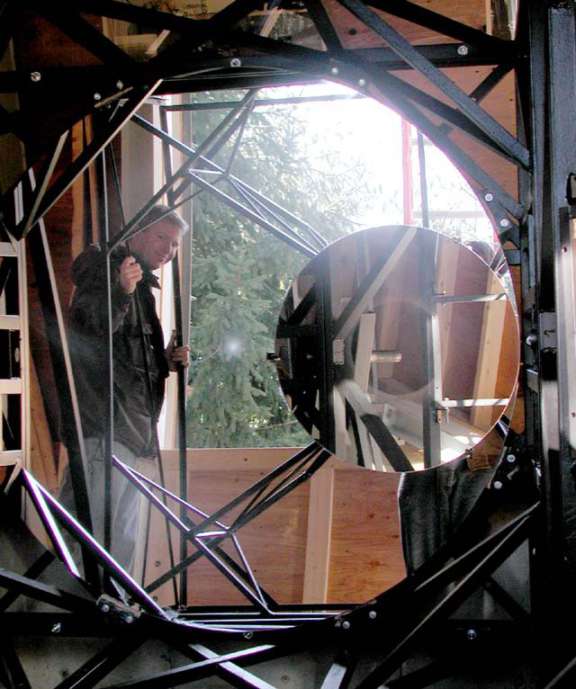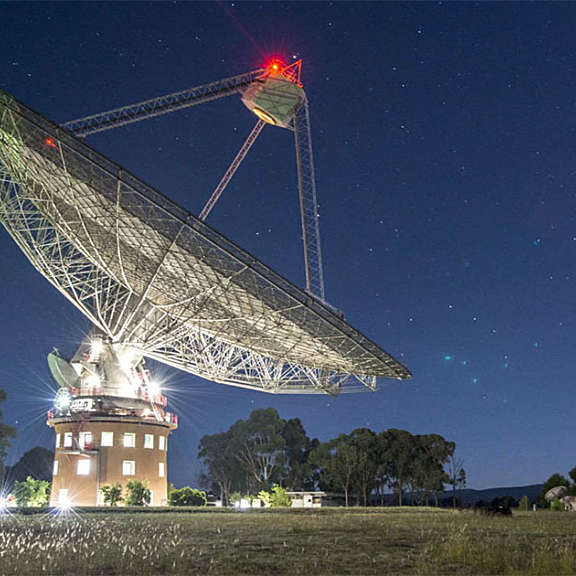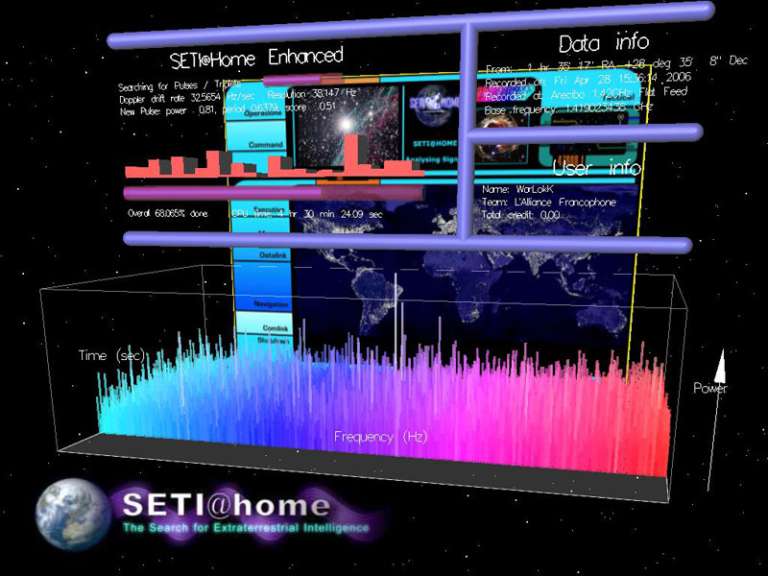SETI, the Search for Extraterrestrial Intelligence
SETI, which stands for the search for extraterrestrial intelligence, is an effort to answer the question of whether we are alone in the Universe. SETI projects use various techniques to look for signs of technological activity coming from other planets, such as radio transmissions and optical signals. The underlying assumption is that advanced alien civilizations might use some of the same properties of physics that humans use to communicate. Knowing how a distant alien species might be able to detect our presence helps humans refine our search for other intelligences.
NASA, other space agencies around the world, and groups like the SETI Institute and The Planetary Society have been conducting SETI research for many decades.
Is There Anybody out There?
The Planetary Society has supported SETI, the search for extraterrestrial intelligence, practically since our founding in 1980. Learn the past, present, and future of SETI.
Our SETI history
The below text was adapted from our 2017 article, Is There Anybody Out There? The past, present and future of SETI, the search for extraterrestrial intelligence.
In 1978, during one of his many appearances on The Tonight Show, Planetary Society co-founder Carl Sagan discussed SETI at length with host Johnny Carson. In a pre-Internet era where most Americans only had a few channels, Sagan and Carson spent 15 minutes on prime-time television discussing everything from Star Wars ("I felt very bad that, at the end, the Wookiee didn't get a medal," Sagan said) to how aliens might send us a signal using prime numbers.
"The remarkable thing is, for all the history of mankind, people have wondered about intelligence elsewhere—I think it's in religion and philosophy, legends—but this is the first time that we have the competence and ability to actually do such a search, and we are just beginning," Sagan said.
The Planetary Society's involvement in SETI practically began when the organization was founded in 1980. Just one year later, NASA and the Society funded Suitcase SETI, a portable spectrum analyzer that could be installed on large radio telescopes like Arecibo Observatory in Puerto Rico. Suitcase SETI eventually grew into Sentinel, an all-sky search using a 26-meter radio telescope at Harvard University. Next came META, the Megachannel ExtraTerrestrial Assay, funded with a significant donation from Steven Spielberg, who was then a Planetary Society board member.
Carl Sagan describes Planetary Society SETI project The Planetary Society's involvement in SETI practically began when the organization was founded in 1980. Just one year later, NASA and the Society funded Suitcase SETI, a portable spectrum analyzer that could be installed on large radio telescopes like Arecibo. Suitcase SETI eventually grew into Sentinel, an all-sky search using a 26-meter radio telescope at Harvard University. Next came META, the Megachannel ExtraTerrestrial Assay, funded with a significant donation from Steven Spielberg, who was then a Planetary Society board member.Video: Cosmos Studios

These projects were led by Paul Horowitz, a Harvard physicist and electrical engineer. META was able to pick through 8 million slices of radio frequency at a time, making it the most advanced SETI search ever when it came online in 1985. Yet when compared to modern processing capabilities, its performance was paltry.
"I had that thing (the META computer) in a double rack, and at the top, it said, 'META supercomputer—75 million instructions per second,'" Horowitz said in 2017. "Now, your cell phone is better than that."
During a decade of operations, META found 37 "candidate events"—strong signals of unknown origin. None have ever repeated. The Society launched a southern hemisphere clone of the project named META II, and META eventually evolved into BETA, which increased the processing capacity of the Harvard telescope to a quarter-billion channels at once, scanning the water hole between 1,400 and 1,700 megahertz. BETA operated until 1999, when a storm damaged the antenna's drive gear.
Around the same time, Horowitz's group, motivated by Charles Townes, who invented the laser, started tinkering with optical SETI searches. Visible light has a higher frequency than radio waves, allowing more data to be encoded over any given period of time. Like radio waves, visible light also filters through our atmosphere, making it a logical portion of the spectrum for SETI searches.
In 2006, Horowitz and The Planetary Society constructed a 1.8-meter telescope at Harvard which began the first dedicated, all-sky optical SETI survey. The search is still in operation, completing a full survey of the sky visible from Massachusetts every 200 nights.

Meanwhile, in the late 1980s, The Planetary Society, NASA, and the National Science Foundation helped fund a west coast SETI effort called SERENDIP at the University of California, Berkeley. SERENDIP, as its name implies, looks for serendipitous SETI detections by piggybacking on traditional astronomical observations made by large radio telescopes. The program has undergone many upgrades and relocations over the years, and was still running at Arecibo when the telescope was damaged by Hurricane Maria in September 2017.
SERENDIP originally processed data in real-time, but Berkeley soon began archiving the data and sifting through them using computer algorithms. There were more data available than could be processed using supercomputers, said Dan Werthimer, who in 2017 was the chief scientist of the Berkeley SETI Research Center. Werthimer and three other engineers and scientists designed a program to allow home computers to help with the data crunching.
"We had this wild and crazy idea to use volunteers to analyze our data, but we took it around to various people, and nobody seemed to think it would ever work," Werthimer said. "The Planetary Society said, 'Hey this wild, crazy idea? We want to get behind it.' And they gave us the money to launch the project."
In 1999, Berkeley released the result, SETI@home. Until the project's end in 2020, more than 5.2 million people participated in the project and donated spare computing power to help search for intelligent life. The open-source software, BOINC, on which SETI@home is based, is now used for other projects. This led to what Werthimer called "the democratization of supercomputing," where users can choose individual research programs to assist.
Andrew Siemion, the director of the Berkeley SETI Research Center, credited The Planetary Society's SETI@home involvement for helping keep the field alive prior to his arrival at Berkeley as a student in 2004.
"Science is about standing on the shoulders of giants," he said in 2017. "Frankly, we would not be here today were it not for the support specifically of the Planetary Society."
The Planetary Society recently awarded a $49,980 grant to a team from the University of California to fund the development of a citizen science project that will help with one of the biggest challenges with radio SETI: weeding out the many sources of radio signals produced by intelligent life here on Earth.
Latest Stories
Reobservations Report No. 5: First Observation Session Completed at Arecibo
The SETI@home team has completed the first of its three 8-hour observation session at Arecibo, designed to revisit the most promising candidate signals detected so far by SETI@home.
Reobservations Report No. 4: Results in Real Time
SETI@home scientists will have to wait for several weeks for the full analysis of the data collected during the reobservations. But even while the observations are going on at Arecibo, they will already have a good idea if they have found something significant.
Reobservations Report No. 3: Selecting the Finalist Candidates
For three successive days SETI@home will have use of the giant Arecibo radio telescope to revisit the most promising candidate signals detected since the project was launched in 1999. SETI@home Chief Scientist Dan Werthimer and his team put together a list of the


 Explore Worlds
Explore Worlds Find Life
Find Life Defend Earth
Defend Earth






